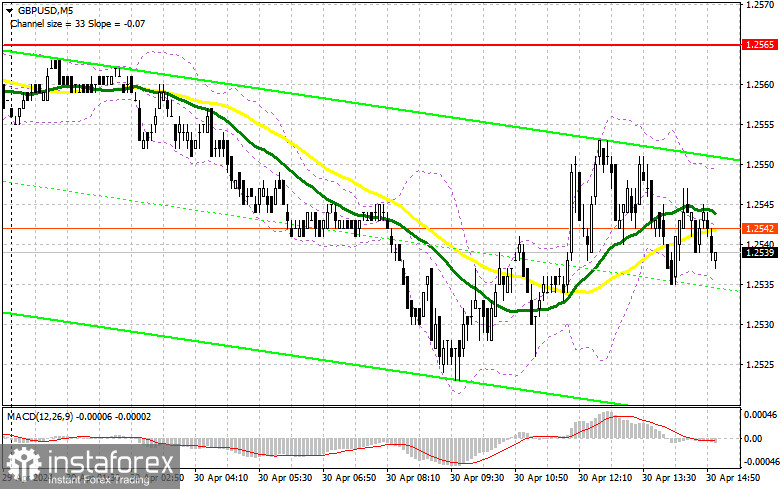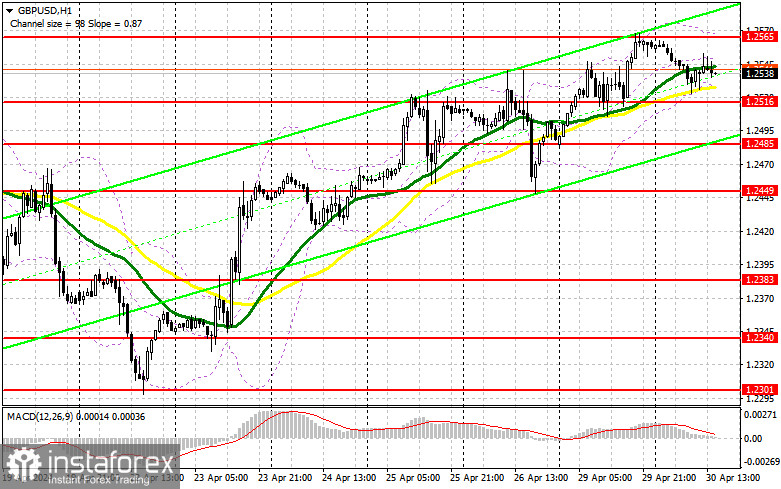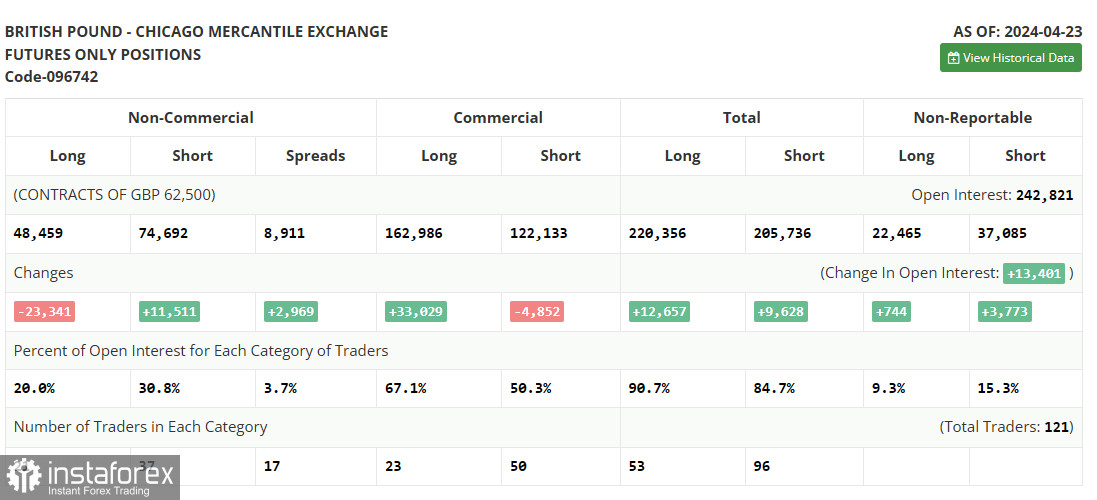
To open long positions on GBP/USD, you need:
The data on lending in the UK did not help bring volatility back to the market, so in the afternoon I advise you to focus on the report on consumer confidence in the United States and the Chicago PMI index. The first indicator is much more important. Its growth will return the pressure on GBP/USD, which I will try to use in order to work out the morning scenario. The formation of a false breakdown in the support area of 1.2516 will give an entry point to buy with the aim of rising to the resistance of 1.2565. A breakout and a top-down test of this range against the background of bad statistics will give a chance for GBP/USD growth, which will allow you to get to 1.2610. In the case of an exit above this range, we can talk about a breakthrough to 1.2657, where I'm going to fix profits. But given the Fed's meeting tomorrow, this is unlikely. In the scenario of a fall in GBP/USD and the absence of buyers at 1.2516 in the afternoon, the market will maintain balance, and trading will move into the framework of a side channel. In this case, I will look for purchases in the area of 1.2485. The formation of a false breakdown there will be a suitable option for entering the market. It is possible to open long positions on GBP/USD immediately on a rebound from 1.2449 in order to correct by 30-35 points within a day.
To open short positions on GBP/USD, you need:
The bears still have a chance to continue to return to the pair's decline, but for this they need to take 1.2516, which they failed to do in the first half of the day. If the pair grows after weak US data, I will postpone sales until the test of a new resistance of 1.2565, which buyers have been looking at with great interest for a long time. Only the formation of a false breakdown there will make it possible to verify the presence of large sellers in the market, which will lead to a fall in GBP/USD to the area of 1.2516. A breakout and a reverse test from the bottom up of this range will increase the pressure on the pair, giving the bears an advantage and another entry point to sell with the aim of updating 1.2485 and 1.2449. A longer-range target will be a minimum of 1.2383, where I will record profits. With the option of GBP/USD growth and the absence of bears at 1.2565 in the afternoon, the bulls will have the opportunity to continue building an uptrend with an upward movement to the resistance area of 1.2610. I will also serve there only on a false breakdown. In the absence of activity there, I advise you to open short positions on GBP/USD from 1.2657, counting on the pair's rebound down by 30-35 points within the day.


Moving averages
Trading is conducted above the 30 and 50-day moving averages, which indicates the bullish nature of the market.
Note: The period and prices of the moving averages are considered by the author on the hourly chart H1 and differs from the general definition of the classic daily moving averages on the daily chart D1.
Bollinger Bands
In case of a decline, the lower boundary of the indicator, around 1.2525, will act as support.
Description of indicators:
- Moving average (determines the current trend by smoothing volatility and noise). Period 50. Marked in yellow on the chart.
- Moving average (determines the current trend by smoothing volatility and noise). Period 30. Marked in green on the chart.
- MACD indicator (Moving Average Convergence/Divergence — convergence/divergence of moving averages) Fast EMA period 12. Slow EMA period 26. SMA period 9
- Bollinger Bands. Period 20
- Non-commercial traders - speculators, such as individual traders, hedge funds, and large institutions, use the futures market for speculative purposes and meet certain requirements.
- Long non-commercial positions represent the total long open position of non-commercial traders.
- Short non-commercial positions represent the total short open positions of non-commercial traders.
- The total non-commercial net position is the difference between the short and long positions of non-commercial traders.
 English
English 
 Русский
Русский Bahasa Indonesia
Bahasa Indonesia Bahasa Malay
Bahasa Malay ไทย
ไทย Español
Español Deutsch
Deutsch Български
Български Français
Français Tiếng Việt
Tiếng Việt 中文
中文 বাংলা
বাংলা हिन्दी
हिन्दी Čeština
Čeština Українська
Українська Română
Română

